3 - 7 October 2022
Race for peaceful space needs to be built on transparency
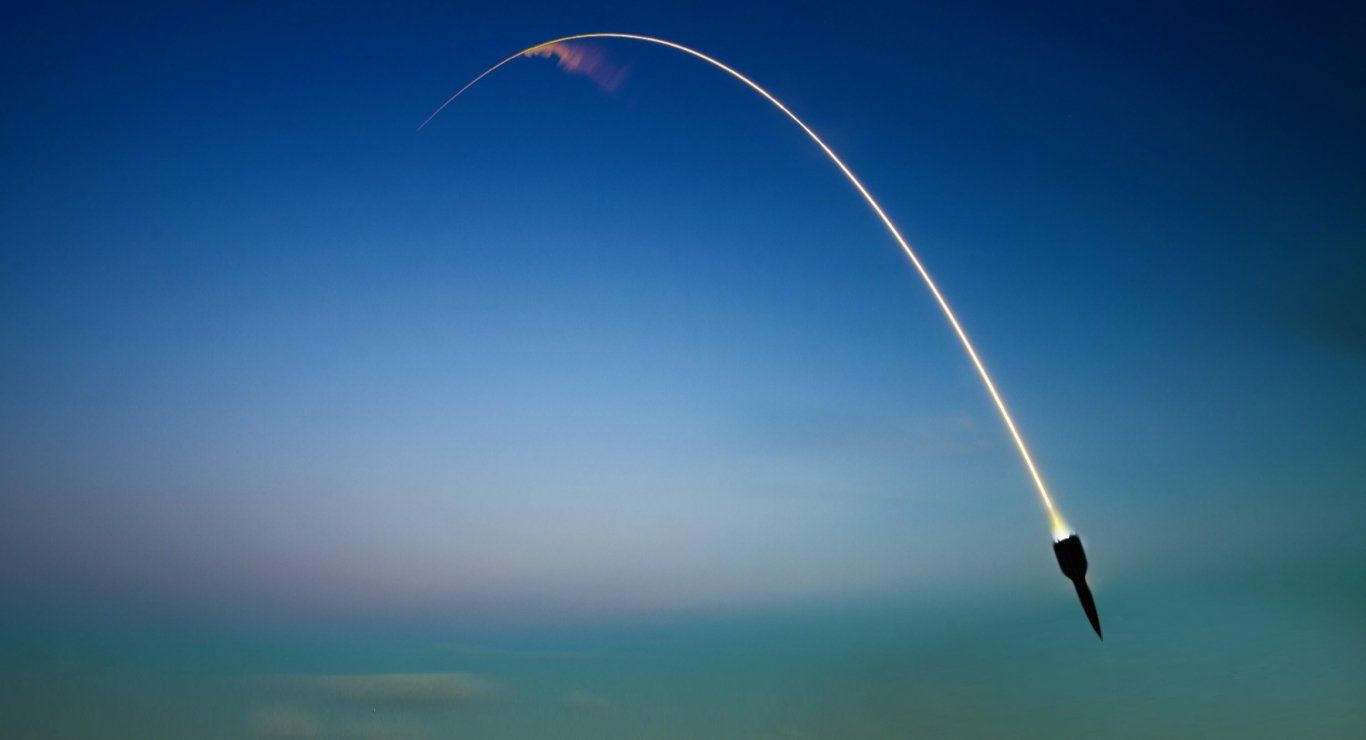
Concerns about ongoing militarisation of space (Image: Pixabay)
A new space race is underway, there is no doubt about that. Whether it be to the moon, for resource mining, energy solutions or military dominance, nations and the private sector or vying to take the lead in the new space economy. However, there also appears to be, arguably, a race to establish peaceful space, as leaders try to persuade the world how their respective plans for space are the ones to follow.
Last week we learnt about NASA’s successful impact of its DART probe into asteroid Dimporphis, attempting to demonstrate how to change the course of a threatening asteroid. The US-led ban on ASAT testing is also slowly gathering pace, and there appears to be increased efforts in establishing rules and norms for sustainable space and debris removal in orbit. Building universally agreed rules, and pursuing a truly transparent path with be vital towards creating a safe and peaceful future in space.
However, space also continues to be a sphere of contention and increased military activity, spurred on by events in Earth. Using space for missile targeting, military communications, hypersonic launches and observation have all become more vital for military purposes, especially highlighted in the Ukraine conflict. If this is the case, what value will nations put on transparency in space, in order to build healthy and trusted partnership in this rapidly evolving new economy?
Space becoming more interconnected with military?
There is certainly an increasing demand for use of space for military purposes, intensified by recent geopolitical events. Furthermore, militarisation of space doesn’t only belong to governments and national agencies anymore, as the private sector becomes increasingly linked to defence and warfare. Furthermore, are national agencies and companies transparent enough about their relationship with the military? Or will secretive policies deter the formation of new relationships?
Firefly Space recently carried out a successful launch of their Alpha rocket, a long awaited success after their initial failed attempt last year. Further to this, and along with Millennium Space Systems, they have been selected by the U.S. Space Systems Command to demonstrate a rapid-response mission to LEO in 2023. This comes after the US this year highlighted the need to call-on the private sector to provide responsive solutions, in order to quickly respond to such events as i.e. an attack on their satellites, in order to maintain the upper-hand in space.
The use of space is becoming more of norm in warfare, and this has been accelerated by the Ukraine conflict. The ESA will later this month request an increased spending package, seeking to reduce its reliance on imported technology, and establish itself as a sovereign space domain. They will aim to double investment in key tech by 2025 (according to spaceintelreport.com). The agency’s overall package of 18 billion euros to be presented at the Nov. 22-23 CM22 ministerial conference in Paris. Also, in an interview with the BBC, head of US Space Force, General Jay Raymond, has discussed how space is becoming the latest domain of warfare, and has stated his concerns about war could be no longer confined to only land, air and sea. He adds that the US are committed to safe and responsible behaviour in space but is concerned that “…not everybody shares that view” (bbc.com, 2022). There is a clear necessity for transparency in the uses of space in order to maintain peace, stability and the future of the space economy.
Also concerning for the US, Japan and their allies, was the launch of a North Korean ballistic missile this week, launching into space, flying over Japan, double the altitude of the ISS. Whilst missile launches from North Korea are nothing new, this will be seen as an increased provocation, and the direct use of space in warfare. Iran has also claimed to have successfully launched a space tug, capable of moving satellites between orbits. Whilst Iran claims they are committed to peaceful uses of space, the US are concerned that their space programme could be used to forward its ballistic missile technology. Transparency in the uses of outer space is needed more than ever.
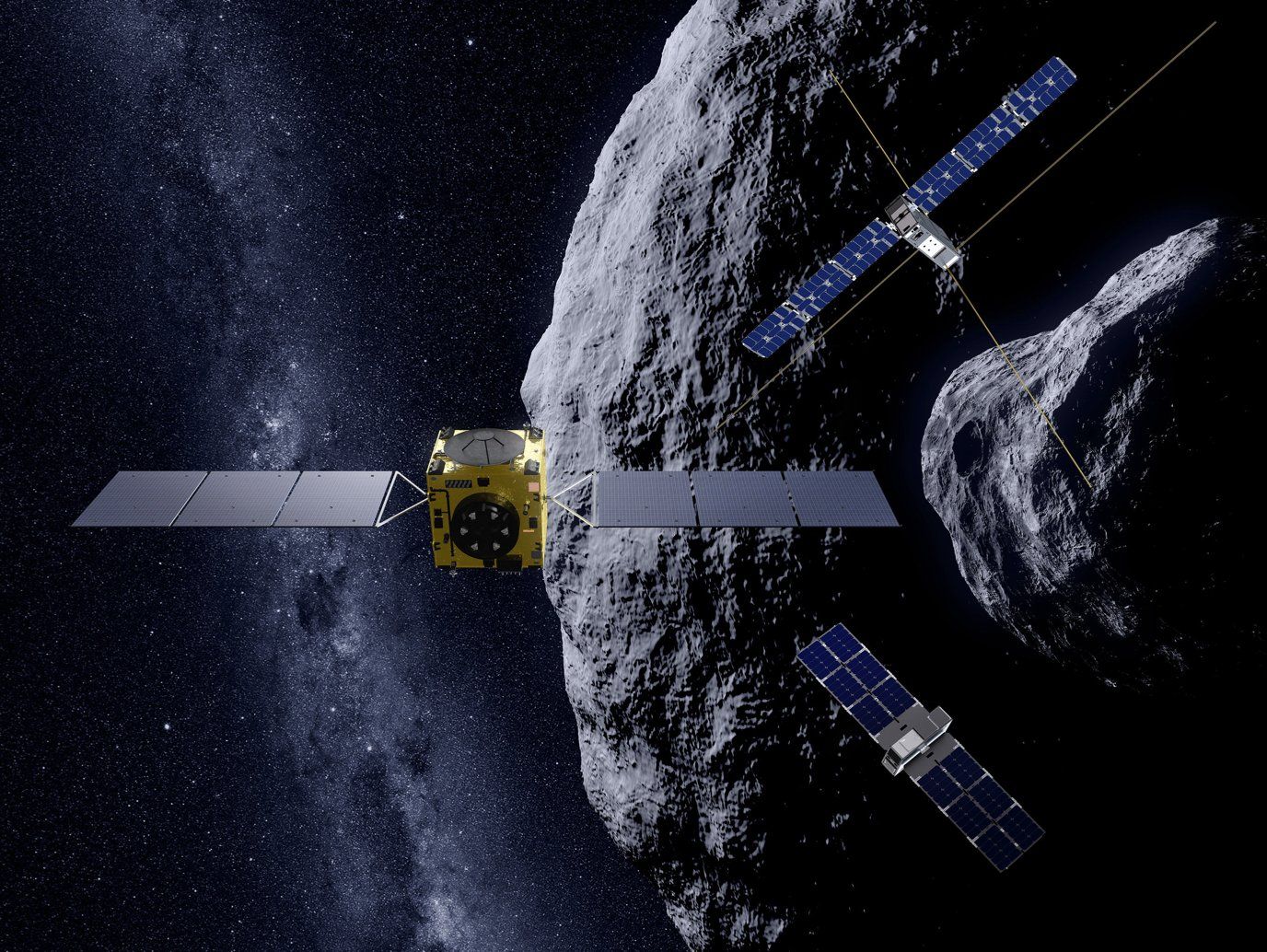
ESA to monitor impact of DART probe (Image: ESA/Science Office)
Transparency in building new partnerships
This lack of transparency could prove to be disastrous, as it already has been in the past. We only have to think of recent events such as the cold war, and the use of secretive technologies which led to a costly and almost devastating arms race, one which could now take place in space. Furthermore, a lack of trust and honesty can deter the formation of new partnerships and the development of new space nations.
An article from US news website Axios this week discussed the expansion of China’s use of satellite ground stations in South America, and the concern raised by governments due to the strong ties between the Chinese space program and their military. The article highlights that NASA also has close ties with the US military, but that relationship is transparent and “clearly delineated”. Another article from Breaking Defense has highlighted that Europe and the US are making progress in space information sharing (mostly in relation to space traffic management), but in contrast, Richard DalBello (NOAA Office of Space Commerce Director) has caused China of “…simply not sharing information.”
Transparency in these areas will be vital in order to not only maintain (or rebuild) relations in space, but also to establish new partnerships. As seen perhaps in South America, it is not only technology that influences space, but geopolitics as well. These factors could influence the development of the African space industry, as China, Europe and the US all look to build bridges with African nations. According to the Mail & Guardian “China is the largest beneficiary of space partnerships with African nations…”. However, Europe is increasing its efforts, and last year “…unveiled two initiatives with a combined investment value of $29-million to develop the use of satellite technologies in Africa over the next four years.” (mg.co.za, 2022).
The EU and US have also recently signed a “non-binding agreement” on their future cooperative lunar missions, and China has reached for international partners for its space station and lunar research station plans. Both sides have a lot to offer for potential new partners, such as African nations, but how much will transparency in geopolitics affect their reputation and ability to build new relationships?
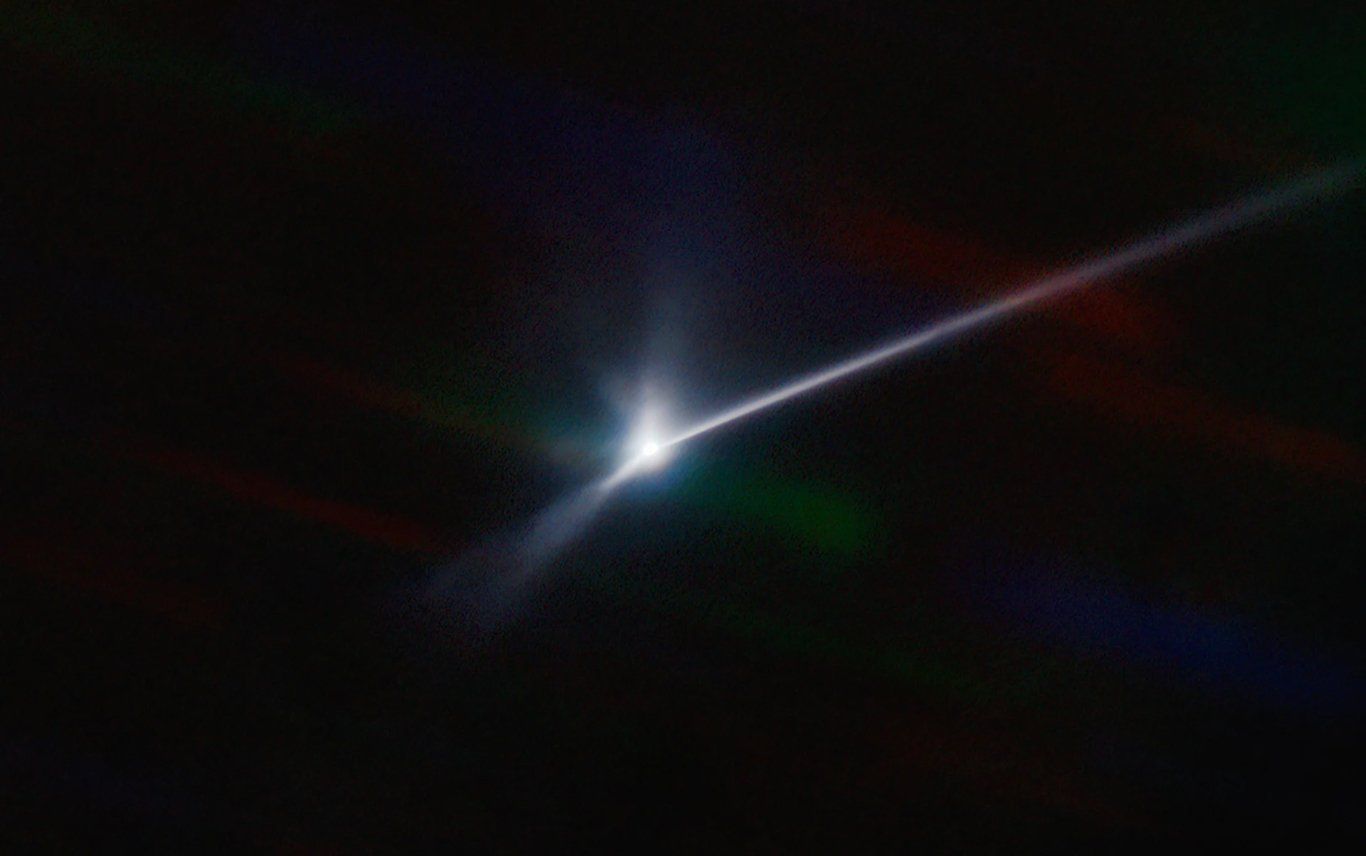
DART mission could be an example of transparent cooperation. Seen here with huge dust trail after crash (Image: CTIO/NOIRLab/SOAR/NSF/AURA/T. Kareta (Lowell Observatory), M. Knight (US Naval Academy))
By working together, humanity can achieve remarkable things
It’s often difficult to understand where the truth lies, and as it stands, all the main players claim to be working towards a peaceful future in outer space, whilst accusing the other of doing the opposite. But there are possibly some areas where we are beginning to see the emergence of transparent behaviour in space. The UK has become the latest nation to commit to the US-led initiative to not destructively test direct ascent anti-satellite missiles (ASAT). Whilst the number of nations signed-up remains only 6, it is perhaps the beginning of an effort to establish safe norms and transparency in space.
In addition, the UK government recently released a statement saying that they are committed to working closely with the UN open-ended working group (OEWG) in order to “…make recommendations on norms, rules and principles of responsible behaviours relating to threats by States to space systems.” The OEWG will conclude its work in August, 2023. Perhaps the best solution for many of threats posed in space will be by working closely with UN, in order to establish true clarity and transparency.
We have to remember, by working together on a clear and delineated basis, humankind can achieve remarkable things. Last week DART smashed into an asteroid in an attempt to discover how we may protect our planet in future. The mission was cheered on by Chinese space watchers, and an ESA probe (Hera) will takeoff in 2024 to go and monitor its effects. Furthermore, on the 5th October, a NASA mission, carried out by SpaceX, took off from Cape Canaveral, carrying 4 US astronauts and a Russian cosmonaut. Sergei Krikalev, executive director of human space flight programs at Roscosmos, has also this week hit a more positive note, by highlighting the ingoing cooperation with the US in space, saying “we just continue what we started many years ago in 1975 when the Apollo-Soyuz crew worked together, and now we continue our cooperation,”.
Despite our differences, we do have the ability to look beyond geopolitics, and work together for the benefit of our future. Hopefully, in space, we can learn how to work together.
External Links
This Week
*News articles posted here are not property of ANASDA GmbH and belong to their respected owners. Postings here are external links only.
Our future in space
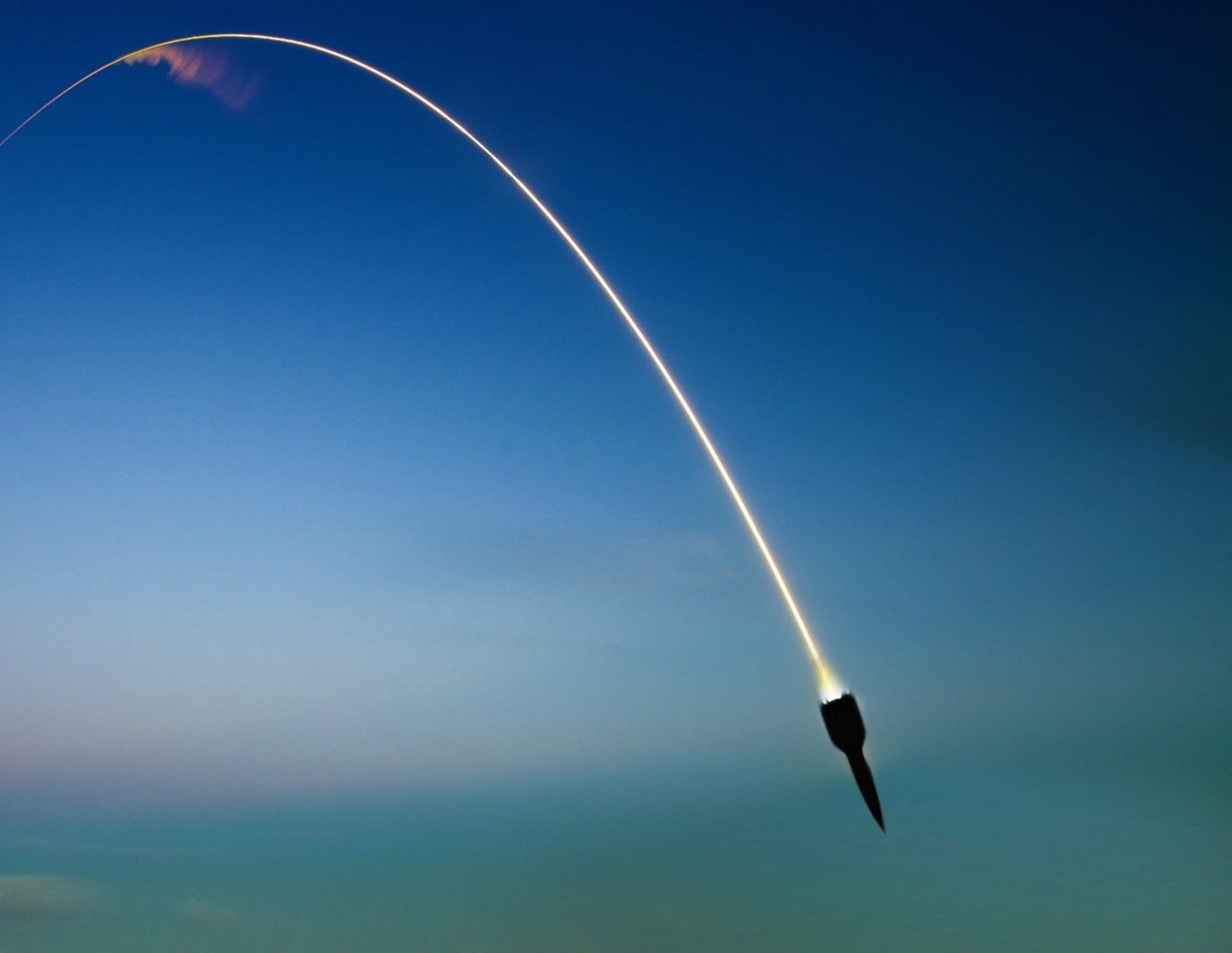
Concerns about ongoing militarisation of space (Image: Pixabay)
3 - 7 October 2022
Race for peaceful space needs to be built on transparency
A new space race is underway, there is no doubt about that. Whether it be to the moon, for resource mining, energy solutions or military dominance, nations and the private sector or vying to take the lead in the new space economy. However, there also appears to be, arguably, a race to establish peaceful space, as leaders try to persuade the world how their respective plans for space are the ones to follow.
Last week we learnt about NASA’s successful impact of its DART probe into asteroid Dimporphis, attempting to demonstrate how to change the course of a threatening asteroid. The US-led ban on ASAT testing is also slowly gathering pace, and there appears to be increased efforts in establishing rules and norms for sustainable space and debris removal in orbit. Building universally agreed rules, and pursuing a truly transparent path with be vital towards creating a safe and peaceful future in space.
However, space also continues to be a sphere of contention and increased military activity, spurred on by events in Earth. Using space for missile targeting, military communications, hypersonic launches and observation have all become more vital for military purposes, especially highlighted in the Ukraine conflict. If this is the case, what value will nations put on transparency in space, in order to build healthy and trusted partnership in this rapidly evolving new economy?
Space becoming more interconnected with military?
There is certainly an increasing demand for use of space for military purposes, intensified by recent geopolitical events. Furthermore, militarisation of space doesn’t only belong to governments and national agencies anymore, as the private sector becomes increasingly linked to defence and warfare. Furthermore, are national agencies and companies transparent enough about their relationship with the military? Or will secretive policies deter the formation of new relationships?
Firefly Space recently carried out a successful launch of their Alpha rocket, a long awaited success after their initial failed attempt last year. Further to this, and along with Millennium Space Systems, they have been selected by the U.S. Space Systems Command to demonstrate a rapid-response mission to LEO in 2023. This comes after the US this year highlighted the need to call-on the private sector to provide responsive solutions, in order to quickly respond to such events as i.e. an attack on their satellites, in order to maintain the upper-hand in space.
The use of space is becoming more of norm in warfare, and this has been accelerated by the Ukraine conflict. The ESA will later this month request an increased spending package, seeking to reduce its reliance on imported technology, and establish itself as a sovereign space domain. They will aim to double investment in key tech by 2025 (according to spaceintelreport.com). The agency’s overall package of 18 billion euros to be presented at the Nov. 22-23 CM22 ministerial conference in Paris. Also, in an interview with the BBC, head of US Space Force, General Jay Raymond, has discussed how space is becoming the latest domain of warfare, and has stated his concerns about war could be no longer confined to only land, air and sea. He adds that the US are committed to safe and responsible behaviour in space but is concerned that “…not everybody shares that view” (bbc.com, 2022). There is a clear necessity for transparency in the uses of space in order to maintain peace, stability and the future of the space economy.
Also concerning for the US, Japan and their allies, was the launch of a North Korean ballistic missile this week, launching into space, flying over Japan, double the altitude of the ISS. Whilst missile launches from North Korea are nothing new, this will be seen as an increased provocation, and the direct use of space in warfare. Iran has also claimed to have successfully launched a space tug, capable of moving satellites between orbits. Whilst Iran claims they are committed to peaceful uses of space, the US are concerned that their space programme could be used to forward its ballistic missile technology. Transparency in the uses of outer space is needed more than ever.

ESA to monitor impact of DART probe (Image: ESA/Science Office)
Transparency in building new partnerships
This lack of transparency could prove to be disastrous, as it already has been in the past. We only have to think of recent events such as the cold war, and the use of secretive technologies which led to a costly and almost devastating arms race, one which could now take place in space. Furthermore, a lack of trust and honesty can deter the formation of new partnerships and the development of new space nations.
An article from US news website Axios this week discussed the expansion of China’s use of satellite ground stations in South America, and the concern raised by governments due to the strong ties between the Chinese space program and their military. The article highlights that NASA also has close ties with the US military, but that relationship is transparent and “clearly delineated”. Another article from Breaking Defense has highlighted that Europe and the US are making progress in space information sharing (mostly in relation to space traffic management), but in contrast, Richard DalBello (NOAA Office of Space Commerce Director) has caused China of “…simply not sharing information.”
Transparency in these areas will be vital in order to not only maintain (or rebuild) relations in space, but also to establish new partnerships. As seen perhaps in South America, it is not only technology that influences space, but geopolitics as well. These factors could influence the development of the African space industry, as China, Europe and the US all look to build bridges with African nations. According to the Mail & Guardian “China is the largest beneficiary of space partnerships with African nations…”. However, Europe is increasing its efforts, and last year “…unveiled two initiatives with a combined investment value of $29-million to develop the use of satellite technologies in Africa over the next four years.” (mg.co.za, 2022).
The EU and US have also recently signed a “non-binding agreement” on their future cooperative lunar missions, and China has reached for international partners for its space station and lunar research station plans. Both sides have a lot to offer for potential new partners, such as African nations, but how much will transparency in geopolitics affect their reputation and ability to build new relationships?

DART mission could be an example of transparent cooperation. Seen here with huge dust trail after crash (Image: CTIO/NOIRLab/SOAR/NSF/AURA/T. Kareta (Lowell Observatory), M. Knight (US Naval Academy))
By working together, humanity can achieve remarkable things
It’s often difficult to understand where the truth lies, and as it stands, all the main players claim to be working towards a peaceful future in outer space, whilst accusing the other of doing the opposite. But there are possibly some areas where we are beginning to see the emergence of transparent behaviour in space. The UK has become the latest nation to commit to the US-led initiative to not destructively test direct ascent anti-satellite missiles (ASAT). Whilst the number of nations signed-up remains only 6, it is perhaps the beginning of an effort to establish safe norms and transparency in space.
In addition, the UK government recently released a statement saying that they are committed to working closely with the UN open-ended working group (OEWG) in order to “…make recommendations on norms, rules and principles of responsible behaviours relating to threats by States to space systems.” The OEWG will conclude its work in August, 2023. Perhaps the best solution for many of threats posed in space will be by working closely with UN, in order to establish true clarity and transparency.
We have to remember, by working together on a clear and delineated basis, humankind can achieve remarkable things. Last week DART smashed into an asteroid in an attempt to discover how we may protect our planet in future. The mission was cheered on by Chinese space watchers, and an ESA probe (Hera) will takeoff in 2024 to go and monitor its effects. Furthermore, on the 5th October, a NASA mission, carried out by SpaceX, took off from Cape Canaveral, carrying 4 US astronauts and a Russian cosmonaut. Sergei Krikalev, executive director of human space flight programs at Roscosmos, has also this week hit a more positive note, by highlighting the ingoing cooperation with the US in space, saying “we just continue what we started many years ago in 1975 when the Apollo-Soyuz crew worked together, and now we continue our cooperation,”.
Despite our differences, we do have the ability to look beyond geopolitics, and work together for the benefit of our future. Hopefully, in space, we can learn how to work together.
Share this article
External Links
This Week
*News articles posted here are not property of ANASDA GmbH and belong to their respected owners. Postings here are external links only.
3 - 7 October 2022
Race for peaceful space needs to be built on transparency
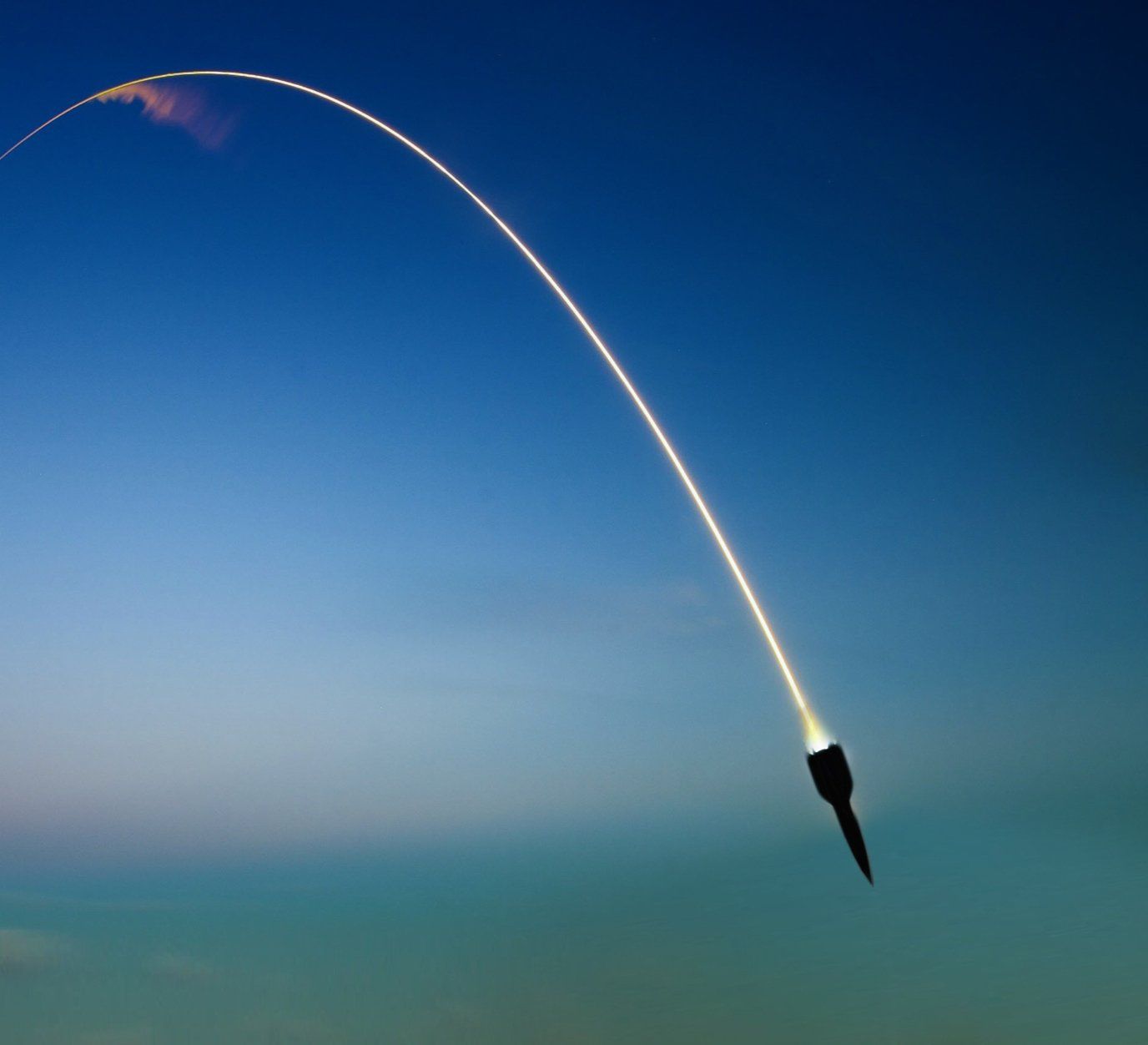
Concerns about ongoing militarisation of space (Image: Pixabay)
A new space race is underway, there is no doubt about that. Whether it be to the moon, for resource mining, energy solutions or military dominance, nations and the private sector or vying to take the lead in the new space economy. However, there also appears to be, arguably, a race to establish peaceful space, as leaders try to persuade the world how their respective plans for space are the ones to follow.
Last week we learnt about NASA’s successful impact of its DART probe into asteroid Dimporphis, attempting to demonstrate how to change the course of a threatening asteroid. The US-led ban on ASAT testing is also slowly gathering pace, and there appears to be increased efforts in establishing rules and norms for sustainable space and debris removal in orbit. Building universally agreed rules, and pursuing a truly transparent path with be vital towards creating a safe and peaceful future in space.
However, space also continues to be a sphere of contention and increased military activity, spurred on by events in Earth. Using space for missile targeting, military communications, hypersonic launches and observation have all become more vital for military purposes, especially highlighted in the Ukraine conflict. If this is the case, what value will nations put on transparency in space, in order to build healthy and trusted partnership in this rapidly evolving new economy?
Space becoming more interconnected with military?
There is certainly an increasing demand for use of space for military purposes, intensified by recent geopolitical events. Furthermore, militarisation of space doesn’t only belong to governments and national agencies anymore, as the private sector becomes increasingly linked to defence and warfare. Furthermore, are national agencies and companies transparent enough about their relationship with the military? Or will secretive policies deter the formation of new relationships?
Firefly Space recently carried out a successful launch of their Alpha rocket, a long awaited success after their initial failed attempt last year. Further to this, and along with Millennium Space Systems, they have been selected by the U.S. Space Systems Command to demonstrate a rapid-response mission to LEO in 2023. This comes after the US this year highlighted the need to call-on the private sector to provide responsive solutions, in order to quickly respond to such events as i.e. an attack on their satellites, in order to maintain the upper-hand in space.
The use of space is becoming more of norm in warfare, and this has been accelerated by the Ukraine conflict. The ESA will later this month request an increased spending package, seeking to reduce its reliance on imported technology, and establish itself as a sovereign space domain. They will aim to double investment in key tech by 2025 (according to spaceintelreport.com). The agency’s overall package of 18 billion euros to be presented at the Nov. 22-23 CM22 ministerial conference in Paris. Also, in an interview with the BBC, head of US Space Force, General Jay Raymond, has discussed how space is becoming the latest domain of warfare, and has stated his concerns about war could be no longer confined to only land, air and sea. He adds that the US are committed to safe and responsible behaviour in space but is concerned that “…not everybody shares that view” (bbc.com, 2022). There is a clear necessity for transparency in the uses of space in order to maintain peace, stability and the future of the space economy.
Also concerning for the US, Japan and their allies, was the launch of a North Korean ballistic missile this week, launching into space, flying over Japan, double the altitude of the ISS. Whilst missile launches from North Korea are nothing new, this will be seen as an increased provocation, and the direct use of space in warfare. Iran has also claimed to have successfully launched a space tug, capable of moving satellites between orbits. Whilst Iran claims they are committed to peaceful uses of space, the US are concerned that their space programme could be used to forward its ballistic missile technology. Transparency in the uses of outer space is needed more than ever.
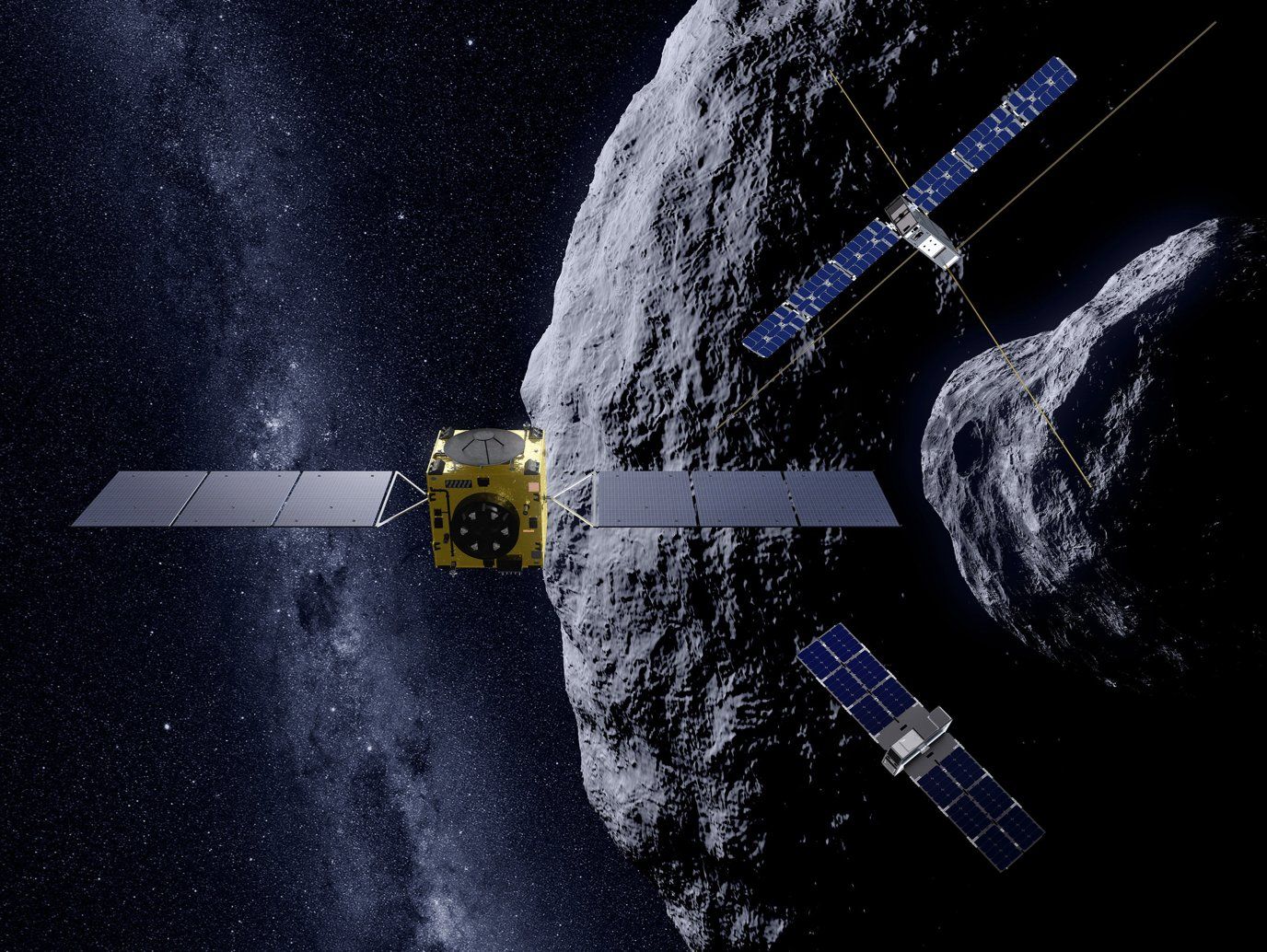
ESA to monitor impact of DART probe (Image: ESA/Science Office)
Transparency in building new partnerships
This lack of transparency could prove to be disastrous, as it already has been in the past. We only have to think of recent events such as the cold war, and the use of secretive technologies which led to a costly and almost devastating arms race, one which could now take place in space. Furthermore, a lack of trust and honesty can deter the formation of new partnerships and the development of new space nations.
An article from US news website Axios this week discussed the expansion of China’s use of satellite ground stations in South America, and the concern raised by governments due to the strong ties between the Chinese space program and their military. The article highlights that NASA also has close ties with the US military, but that relationship is transparent and “clearly delineated”. Another article from Breaking Defense has highlighted that Europe and the US are making progress in space information sharing (mostly in relation to space traffic management), but in contrast, Richard DalBello (NOAA Office of Space Commerce Director) has caused China of “…simply not sharing information.”
Transparency in these areas will be vital in order to not only maintain (or rebuild) relations in space, but also to establish new partnerships. As seen perhaps in South America, it is not only technology that influences space, but geopolitics as well. These factors could influence the development of the African space industry, as China, Europe and the US all look to build bridges with African nations. According to the Mail & Guardian “China is the largest beneficiary of space partnerships with African nations…”. However, Europe is increasing its efforts, and last year “…unveiled two initiatives with a combined investment value of $29-million to develop the use of satellite technologies in Africa over the next four years.” (mg.co.za, 2022).
The EU and US have also recently signed a “non-binding agreement” on their future cooperative lunar missions, and China has reached for international partners for its space station and lunar research station plans. Both sides have a lot to offer for potential new partners, such as African nations, but how much will transparency in geopolitics affect their reputation and ability to build new relationships?
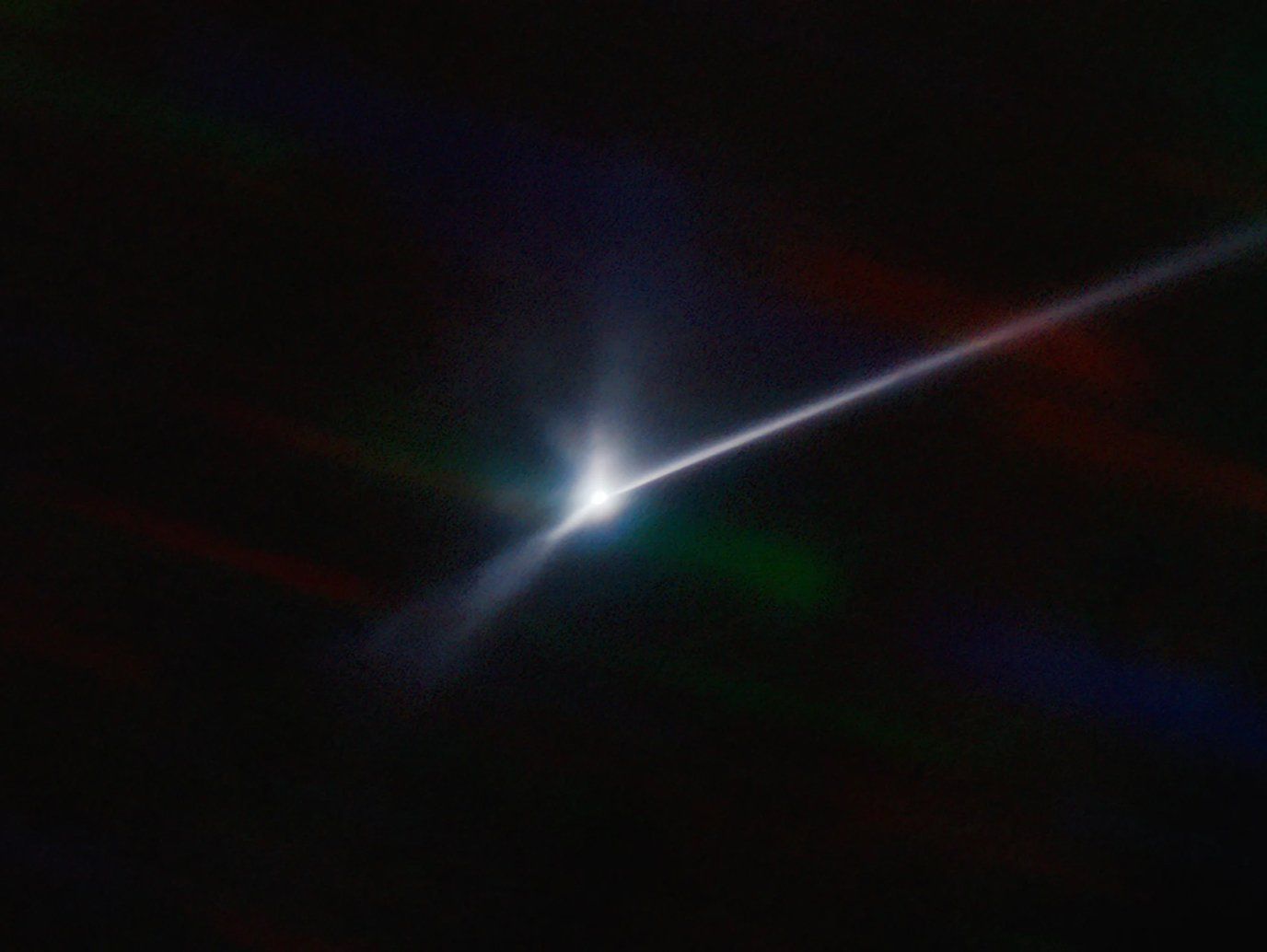
DART mission could be an example of transparent cooperation. Seen here with huge dust trail after crash (Image: CTIO/NOIRLab/SOAR/NSF/AURA/T. Kareta (Lowell Observatory), M. Knight (US Naval Academy))
By working together, humanity can achieve remarkable things
It’s often difficult to understand where the truth lies, and as it stands, all the main players claim to be working towards a peaceful future in outer space, whilst accusing the other of doing the opposite. But there are possibly some areas where we are beginning to see the emergence of transparent behaviour in space. The UK has become the latest nation to commit to the US-led initiative to not destructively test direct ascent anti-satellite missiles (ASAT). Whilst the number of nations signed-up remains only 6, it is perhaps the beginning of an effort to establish safe norms and transparency in space.
In addition, the UK government recently released a statement saying that they are committed to working closely with the UN open-ended working group (OEWG) in order to “…make recommendations on norms, rules and principles of responsible behaviours relating to threats by States to space systems.” The OEWG will conclude its work in August, 2023. Perhaps the best solution for many of threats posed in space will be by working closely with UN, in order to establish true clarity and transparency.
We have to remember, by working together on a clear and delineated basis, humankind can achieve remarkable things. Last week DART smashed into an asteroid in an attempt to discover how we may protect our planet in future. The mission was cheered on by Chinese space watchers, and an ESA probe (Hera) will takeoff in 2024 to go and monitor its effects. Furthermore, on the 5th October, a NASA mission, carried out by SpaceX, took off from Cape Canaveral, carrying 4 US astronauts and a Russian cosmonaut. Sergei Krikalev, executive director of human space flight programs at Roscosmos, has also this week hit a more positive note, by highlighting the ingoing cooperation with the US in space, saying “we just continue what we started many years ago in 1975 when the Apollo-Soyuz crew worked together, and now we continue our cooperation,”.
Despite our differences, we do have the ability to look beyond geopolitics, and work together for the benefit of our future. Hopefully, in space, we can learn how to work together.
Share this article
External Links
This Week
*News articles posted here are not property of ANASDA GmbH and belong to their respected owners. Postings here are external links only.


















